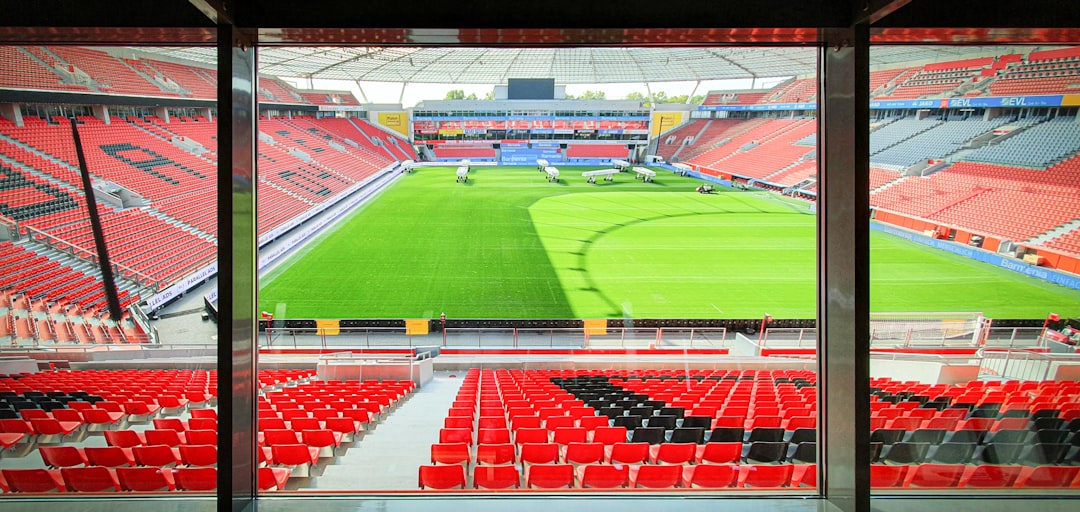From the moment fans scan their digital tickets to when they exit after the final whistle, the game-day experience in the U.S. has undergone a technological revolution. With the introduction of smart stadiums, traditional sports venues are transforming into high-tech hubs that offer immersive, seamless experiences for attendees. These innovations are reshaping how sports enthusiasts engage with teams, events, and fellow fans—forever changing the way Americans watch sports in person.
The Rise of Smart Stadiums
Smart stadiums are not just buildings with giant screens and food stands. They are sophisticated ecosystems embedded with advanced technologies aimed at enhancing convenience, entertainment, and operational efficiency. From interactive mobile apps to AI-powered surveillance systems, these venues are designed to merge the physical and digital worlds.
Some of the most notable smart stadiums in the U.S. include SoFi Stadium in Los Angeles, Allegiant Stadium in Las Vegas, and Levi’s Stadium in Santa Clara. Each of these showcases unique technological integrations that set new standards in the fan experience.
Connected Convenience
Forget waiting in long lines for your favorite snacks or struggling to find your seat. Today’s smart stadiums are equipped with ultra-fast WiFi networks and dedicated mobile apps that allow fans to:
- Order food and drinks directly to their seat
- Access real-time instant replays and in-game stats
- Navigate the stadium with interactive maps
- Purchase merchandise with just a few taps
These features significantly reduce wait times and enhance overall comfort, letting fans focus on the main event instead of logistical hassles.

Personalized Fan Engagement
Another revolution ushered in by smart stadiums is the power of customization. Advanced data analytics let teams and venue operators offer personalized options based on user behaviors, history, and preferences. This also extends to the promotion mix, where tailored campaigns can enhance fan engagement and maximize revenue opportunities.
For example, a season pass holder might receive special offers via push notifications, while a first-time visitor might get tailored onboarding tips or stadium tours. This kind of hyper-personalization makes every fan feel like a VIP.
Augmented reality (AR) and virtual reality (VR) integrations are also being adopted. Fans can point their phone cameras at the field for player stats overlays or even play interactive games during halftime shows. It’s not just a game anymore; it’s an experience.
Safety and Security Through Technology
Smart stadiums prioritize safety with cutting-edge solutions that not only guard against external threats but also enhance health protocols. Features include:
- Facial recognition for secure, touchless entry
- AI-driven surveillance to monitor crowd behaviors and flag anomalies
- Touchless payment methods to limit physical contact
- Air quality monitoring and smart HVAC systems for better climate control
During public health events like pandemics, these technologies are particularly instrumental in managing social distancing and ensuring compliance with safety mandates.

Eco-Friendly Innovations
Sustainability is another core pillar in the smart stadium design. To offset the environmental impact of large-scale sports events, new stadiums incorporate eco-conscious practices and technologies such as:
- Solar-powered energy systems
- Rainwater harvesting setups
- Energy-efficient lighting using LED fixtures
- Smart waste management to improve recycling and reduce landfill contributions
Levi’s Stadium pioneered many of these initiatives, becoming one of the first professional sports venues to achieve LEED Gold certification. Sustainability isn’t just a trend—it’s becoming a standard.
The Business of Better Experiences
It’s not just fans who benefit. For teams and venue operators, smart stadiums provide a treasure trove of data. By analyzing fan flows, purchasing behavior, and digital engagement, teams can:
- Boost ticket and merchandise sales
- Customize marketing strategies
- Optimize staffing and concessions operations
- Enhance sponsorship opportunities through targeted ads
Brands and advertisers are particularly drawn to the personalized digital signage and interactive displays that smart stadiums make possible. These technologies create more meaningful and measurable advertising outcomes compared to traditional billboards alone.
The Future: Even Smarter Stadiums
As 5G technology becomes more widespread, the capabilities of smart stadiums are expected to explode. Fans can expect:
- Real-time multi-camera control to choose their own replay angles
- Extraordinarily low latency for live streaming and AR applications
- Fully autonomous food and beverage delivery via drones or robots
- Gesture-based interfaces to reduce physical contact further
Fans of all ages will find themselves more connected than ever before, and their loyalty to teams may grow thanks to these deeply engaging experiences.
FAQs on Smart Stadiums in the U.S.
- What is a smart stadium?
A smart stadium is a sports venue that incorporates advanced technologies such as high-speed internet, mobile connectivity, IoT devices, AI systems, and sustainable infrastructure to enhance the fan experience and venue operations. - Are tickets only digital in smart stadiums?
While many smart stadiums favor digital ticketing, most also provide physical ticket options for those who prefer them. Digital methods typically offer greater security and faster entry. - Can smart stadiums improve security?
Yes. Technologies like facial recognition, AI surveillance, and predictive analytics significantly enhance both public safety and operational security during events. - Are smart stadiums environmentally friendly?
Many smart stadiums incorporate green technologies like solar panels, rainwater harvesting, smart waste systems, and energy-efficient lighting to reduce their environmental footprint. - How do smart stadiums affect fan engagement?
They offer personalized content, in-seat services, real-time stats, and unique AR/VR experiences that make each visit more memorable and interactive.
As the sports world continues to embrace innovation, smart stadiums stand at the frontier of fan engagement and experience. With every technological advancement, they’re not only changing how fans experience game day—but elevating what it means to attend live sports altogether.
